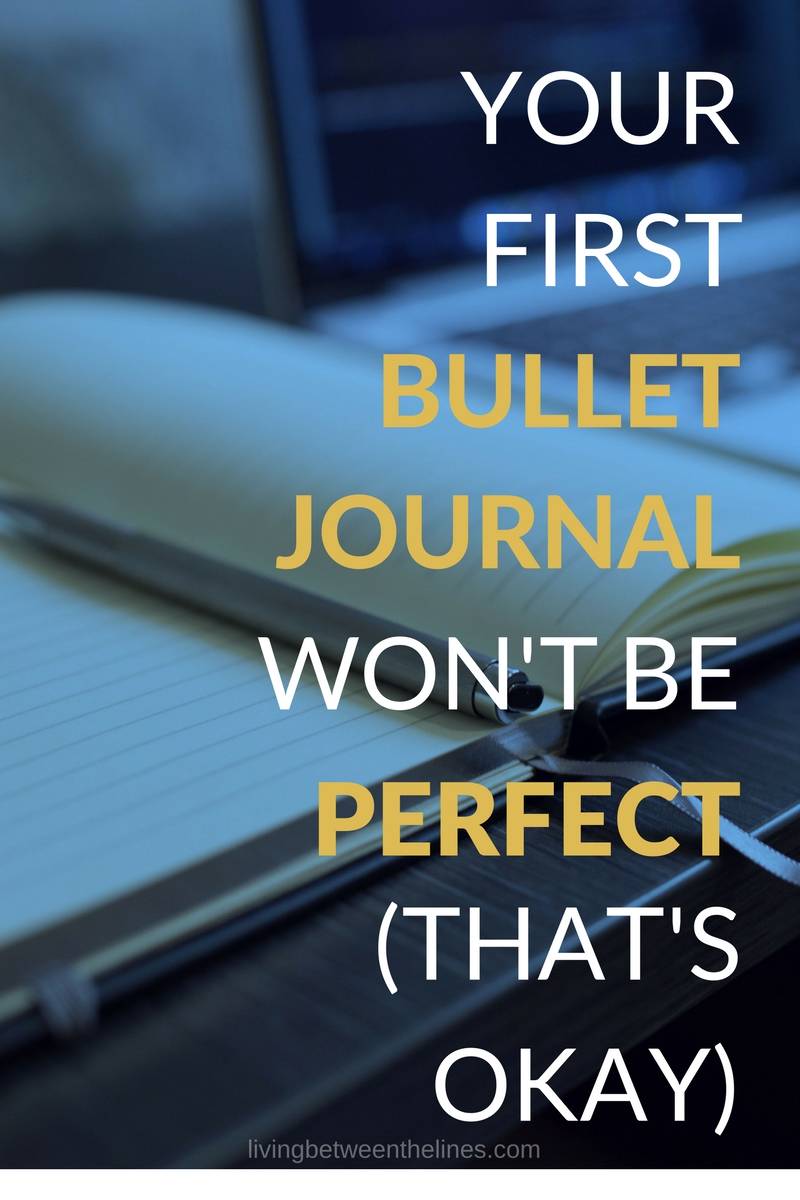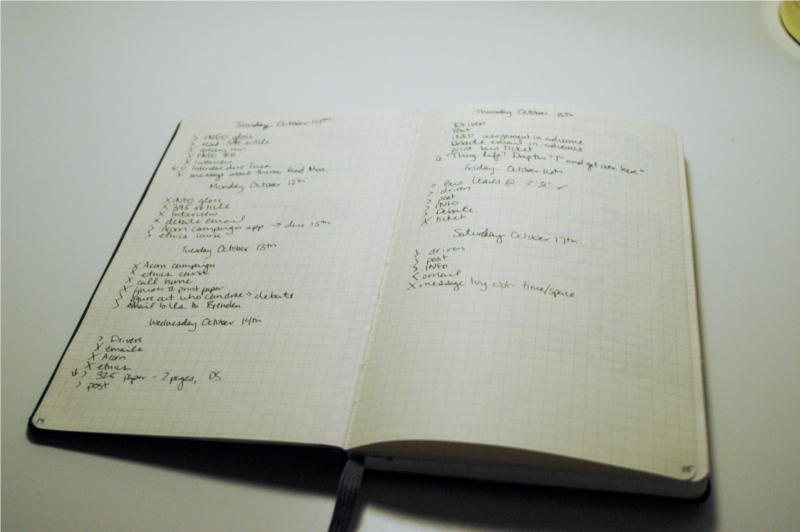If you clicked on this because you did six months of research before starting your bullet journal and it was perfect, thank-you-very-much, I guess you’re excused from today’s post. Enjoy this YouTube playlist of puppy videos and rock on, you improbably-well-prepared maven, you.
For the rest of us, things were – or will be – a little messier. I’ve noticed that bujos tend to attract two types of people – typical “Type A” organization and productivity goddesses, and “Type B” creatives with time management issues that aspire to A-level organization.
No matter which camp you fall into, though, there’s a learning curve that comes with making a bujo. And I’m here to remind you: that’s completely okay.

How did we get here?
And by “here” I mean the point where I feel the need to write a blog post promising you that you can make mistakes when trying something for the first time.
It happened by accident, I think. Bullet journals are hugely popular on visual forms of social media – Insta, Tumblr, Twitter, Facebook, whatever. We like bujo posts with pictures because just reading about them can be super-boring, and I get that.
The problem is that, even if you haven’t started journaling yet, there’s this expectation of perfection. Your lines need to be perfectly straight and even, your hand-lettering has to be gorgeous, your errant doodles should qualify you for the Louvre.
So let me remind you that those aren’t reasonable standards. That’s the first thing you need to know, here at the start.
Why do we cave to the pressure?
As messy as the categories “Type A” and “Type B” are, you probably identify more with one than the other, so let’s revisit them.
I’m firmly in the Type B camp, so A-listers, let me know if I’m off-base here. But from what I understand, if you tend to be more organized and goal driven, the pressure to conform to “conventional” ways of achieving success can be pretty strong. It’s why so many people go through high school AP, into college, and then maybe into grad school before they know what they want to do with their lives. Because that’s the prescribed path to success.
If you’re the A personality, driven type, following the “rules” of the bujo community involves beautiful, elaborate weekly spreads. Perfectly-gridded habit trackers and Dutch doors with perfectly-even edges looks like part of the recipe for success that you’re working on cooking up.
As a Type B girl, I can tell you that part of the allure of #flawless bullet journals is the creativity it takes to make them. I love designing a perfectly-symmetrical, minimalist spread one week and then filling my pages with color the next. Making pretty things is inherently fulfilling.
But I’d guess that for most of us, bujos are an attempt to get into a routine, onto a schedule, and introduce some structure to our lives. For me, that doesn’t come naturally. So when I get online and all these Type A mavens have highly-detailed bujos, I think “That’s what I need to do, too.”
It’s a little toxic.
What are we missing?
Two things: use value and context
In the hype of sharing someone’s gorgeous design, it’s easy to forget – bullet journals are useless if they don’t work.
At the end of the day, a bullet journal is a tool. It can be elaborate, and pretty, and creative, but if it’s not helping you track tasks and make notes, it’s just a glorified sketchbook. I’ve got nothing against sketchbooks, but that’s not what you built it for, right?
If your bullet journal works for you, congrats – you’re doing it right and you don’t need to change anything.
Seriously. Even if your bujo is just a jotted list of things on an undated page in your messiest handwriting. As long as it works, you’re golden. If you want to polish it up later, or if you have some extra time on a Sunday night and want to design a pretty spread, freaking go for it. It’s fun. But the moment you feel obligated to do so, it kind of defeats the purpose.

Take some time, find a technique and a style that works for you, and run with it. That’s what everyone else did.
That’s what I meant by context, by the way. Because the heartbreakingly beautiful spreads we see on Tumblr are the result of weeks – and months, and years – of practice. Trial and error. Little tweaks. Big mistakes. Whatever. Point is, that gorgeous end result is not the same as their first try.
What’s the next move?
So for your first bullet journal, try new stuff. Borrow ideas from your favorite social media channels and adapt them to your needs and your life. Try a Dutch door. Fail spectacularly – or don’t. I’ve watched people lose sight of all the awesome, productivity-boosting benefits of their bujo because it isn’t perfect, and I’m sick of it.
Sure, strive for a pretty bujo. Instagrammers like Emma (up above) prove that gorgeous, productive spreads are possible, and if that’s what you want to make, freaking go for it.
But consider this your reminder that you don’t have to start at the top. That you don’t have to be perfect on your first shot – or ever, actually. That as long as your bullet journal helps you get more done, you’re doing it right and you have nothing to worry about.


